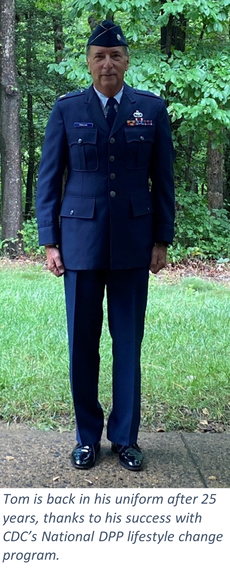 June is Men’s Health Month, and we encourage all men to talk to their doctors about their risk for developing type 2 diabetes. When Tom Triscari visited his doctor for a yearly checkup in December 2019, he didn’t know what an A1c level meant. He soon learned it measures your blood sugar levels over the past 3 months, and his were higher than normal, meaning he was at risk for developing type 2 diabetes. Tom says his doctor encouraged him for years to make healthy food choices, but it was hard for him to follow through on the suggestion. He recalls frequent visits to a favorite restaurant with his coworkers where “the portions were crazy, and the bread was wonderful.” Though wonderful, these more processed foods—and others high in sugar, fat, and salt—caused some health problems for Tom, including weight gain, high blood sugar, and prediabetes. At the suggestion of his doctor, he enrolled in the Centers for Disease Control and Prevention’s (CDC) National Diabetes Prevention Program (National DPP) lifestyle change program like the one offered by CDC-led National DPP. The lifestyle change program connects participants—many of whom are men like Tom—to a Lifestyle Coach who helps them learn to eat healthier, exercise more, and manage stress to reduce their risk of developing type 2 diabetes. The goal is to improve participants’ health so they can be there for what matters most in life, like staying strong for work, spending time with family, and enjoying hobbies. As a former military serviceman, Tom always enjoyed exercise, and the program helped him make physical activity a priority and get back into a healthier routine. With the help of his coach, he set goals to get moving and lose weight. “Because of the program, I have exercised for at least 30 minutes for more than 350 consecutive days. It’s crazy!” he says, laughing about how competitive he can get with himself and how he doesn’t want to break his streak. Tom shares that his Lifestyle Coach, Lori, and the positive peer support from other participants really motivated him to reach his personal health and activity goals. “Having a weekly meeting is both supportive and holds you accountable,” he says. "Having to report back not just to Lori but also to your peers—it’s peer pressure in a positive way.” For Tom, the benefits of the program were obvious. He was able to lower his blood sugar levels, lose 35 pounds, exercise more regularly, and consistently add more fruits and vegetables to his diet. Tom was even able to fit back into his military uniform after 25 years, which to him was the most meaningful reward of all. “It’s the complete program that makes the difference,” he says. “It’s not just about exercise. It’s about understanding what’s good to eat and all the stuff that comes up with stress and how to take care of your heart.” What better way to celebrate Men’s Health Month than to learn how the lifestyle change program, such as National Diabetes Prevention Program (National DPP), could support your health! Learn how to get active and eat healthier so you can continue to do what you love without worrying about health problems from prediabetes slowing you down. We hold sessions with trained Lifestyle Coaches to help you reach your goals. In June, we especially celebrate the men in our lives, though we are grateful for them every day. Reducing your risk for type 2 diabetes helps your family and friends enjoy time with you for many years to come.
0 Comments
This past year presented so many different challenges and obstacles that have tested our strength and resiliency. The global pandemic forced us to cope with situations we never even imagined, and a lot of us struggled with our mental health as a result. The good news is that there are tools and resources available that can support the well-being of individuals and communities. Now, more than ever, we need to combat the stigma surrounding mental health concerns. That is why this Mental Health Awareness Month the National Center for Farmworker Health (NCFH) is highlighting Mental Health America’s 2021 Mental Health Month Toolkit, #Tools2Thrive. The #Tools2Thrive Toolkit offers individuals ideas of what they can do throughout their daily lives to prioritize mental health, build resiliency, and continue to cope with the obstacles of COVID-19.
If you found your mental health was impacted this past year, you are not alone. In fact, of the almost half a million individuals that took the anxiety screening at MHAscreening.org, 79% showed symptoms of moderate to severe anxiety. However, there are practical tools that can help improve your mental health but finding tools that help you thrive and working on your mental health is an ongoing process. Change does not happen overnight. Instead, by focusing on small changes, you can move through the stressors of the past year and develop long-term strategies to support yourself on an ongoing basis. A great starting point for anyone who is ready to start prioritizing their mental health is to take a mental health screening at MHAscreening.org. It’s a quick, free, and confidential way for someone to assess their mental health and begin finding hope and healing. Ultimately, during this month of May, NCFH wants to remind everyone that mental illnesses are real, and recovery is possible. By developing your own #Tools2Thrive, it is possible to find balance between life’s ups and downs and continue to cope with the challenges brought on by the pandemic. For more information and to download the #Tools2Thrive Toolkit, click here. NCFH also has additional resources available on our Mental Health Hub. #Tools2Thrive #MentalHealthAwarenessMonth #MHM2021 An estimated 88 million American adults—more than 1 in 3—have a condition called prediabetes, which means a person’s blood sugar levels are higher than normal, but not yet high enough yet to be diagnosed as type 2 diabetes. When you have prediabetes, there are steps you can take to eat healthier, move more, and manage your stress to reduce your risk of developing type 2 diabetes. The CDC’s National Diabetes Prevention Program (National DPP) lifestyle change program can help you make these changes.
The lifestyle change program, such as the National Diabetes Prevention Program (National DPP) , is inclusive for everyone who has prediabetes. This May for Mental Health Awareness Month, CDC-led National DPP is taking the time to recognize lifestyle change program participants who don’t let challenges or disabilities related to mental health stand in their way of reducing their risk for developing type 2 diabetes. Take lifestyle change program participant Joe for example. Joe has a mental health disability called bipolar disorder, which causes unusual shifts in his mood, energy, activity levels, concentration, and ability to carry out day-to-day tasks. To manage his bipolar disorder, he takes six medicines daily, many of which come with side effects, such as weight gain, extreme fatigue, and difficulty concentrating. Joe had struggled with his weight, and when he found out from his doctor that he had developed prediabetes, it was hard for him to imagine what he could do to make healthy lifestyle changes. In addition to the side effects from his medicines, an increase in mental or physical activity makes him more likely to have panic attacks. With these challenges to overcome, Joe could have given up. Instead, Joe wouldn’t let anything stop him from improving his health to reduce his risk for developing type 2 diabetes. That’s when Joe joined a local lifestyle change program and met his coach, Lonna. As a coach, Lonna often works with participants who have mental health disabilities, teaching them strategies for making healthy lifestyle changes in ways that work for them. For example, since Joe can’t increase his physical activity to lose weight, Lonna helped him focus more on healthy eating. She recommended using measuring cups to help with portion control. Joe uses the cups to measure out each meal and snack to make sure that he doesn’t overeat. “Before putting the food on my plate, I put it into a one-cup measuring cup,” says Joe. “If I have pasta, I know that I can only have one or two cups. A cup of pasta is still a lot of pasta – I didn’t realize how much it was!” Joe says he learned a lot about food and nutrition during the program and how to make better choices to improve his health. Using what he learned, he was able to lose 30 pounds! “It’s nice for people to tell me that I look better or I look good,” says Joe. “I was proud of myself. My parents were proud of me. Lonna would weigh me and see I lost two or three pounds and I felt good about my success.” Joe shows the strength and resilience of so many people who have overcome barriers to improve their health. He has successfully lost weight and lowered his triglycerides, cholesterol, and blood sugar levels. He says that anyone with prediabetes can reduce their risk for type 2 diabetes through the lifestyle change program, like he did. No matter what obstacles you face on the road to better health, the most important thing is to keep working at it and never give up! Challenge yourself to better health! Learn more about how you can be like Joe and reduce your risk for developing type 2 diabetes. Visit the National Diabetes Prevention Program (National DPP) lifestyle change program for more information. Get started on your health journey today.  Lifestyle coach Jillian uses exercise and getting outside as outlets for stress. Lifestyle coach Jillian uses exercise and getting outside as outlets for stress. Today, our world is all about the #hustle. Between work, family obligations, hobbies, and everyday responsibilities, it’s easy to feel maxed out and stressed. This may seem a normal part of life. But did you know that stress could be impacting your risk for type 2 diabetes and other health conditions? April is Stress Awareness Month – the perfect time to reflect on how you manage stress in your life. National Diabetes Prevention Program (National DPP) lifestyle coach Jillian Miner likes to present the topic of stress this way: Imagine that you’re a caveman being chased by a saber tooth tiger. Your survival response kicks in, and your body needs a quick energy boost to support that adrenaline rush. When you experience stress, an easy solution appears to be sugar – a quick fuel to get you through. This is why you tend to crave sugary snacks in stressful moments or turn to “stress eating” to feel better. A small bit of sugar may not be a problem for a caveman fleeing for his life. Today, however, building a habit of eating highly processed foods that are high in unhealthy sugar, carbs, saturated fats, and excess salt is certainly not beneficial for your health. Your body has to find a way to cope with the stressors thrown your way, and sugary foods are often many people’s go-to. This type of snacking in turn increases your blood sugar levels, your chances of having prediabetes, and your risk of developing type 2 diabetes. So, what’s the alternative? The CDC-led National DPP lifestyle change program recognizes the importance of stress management and how effective tools for managing stress help reduce your risk of developing type 2 diabetes. In the National DPP, you connect with other program participants who can relate to your challenges and lifestyle coaches who can support your health journey. For Jillian, this means offering her participants a “buffet of stress management options,” suggesting various activities so they can determine which will work for them. Managing your stress doesn’t have to be an unattainable goal, but instead, can be about making time for the activities you already know refresh you. She says her goal is to get participants to “consider stress management in a different way. It’s about finding creative ways to reduce stress.” Some of Jillian’s top tips for managing stress include the following:
With these approaches in mind, it’s possible to find pauses in your day to minimize stress without turning to food for comfort. Techniques like these and others offered through the National DPP will not only help you feel better emotionally, but they’ll support you in your efforts to live a healthier life overall. To explain the benefits of the National DPP lifestyle change program, Jillian says, “The lifestyle change program isn’t about just teaching you things – everyone already has an idea of stuff that is healthy. The magic is in making healthy habits. The program helps you make healthier choices on a daily basis.” With the help of lifestyle coaches like Jillian, some of those choices can lead to better stress management – and ultimately, a healthier lifestyle. Through the program, you can receive support in following through on the habits that help you to reduce stress. Want to know how you can get involved and learn more about managing stress and reducing your risk of developing type 2 diabetes? Visit the CDC-led National DPP lifestyle change program for more information. Healthy eating – it’s something that everyone knows is important, but it can feel like a chore. Maybe you feel pressure to always make the “right” choice. But what if you got rid of the idea of good foods and bad foods, and instead focused on small changes you could make to your eating habits to improve your health for you and your family? That’s what the lifestyle coaches from CDC’s National Diabetes Prevention Program (National DPP) lifestyle change program encourage – making small changes that can make a big difference to your overall health. Jack Aponte didn’t consider himself a healthy eater until he participated in the National DPP lifestyle change program and learned a few tips from his lifestyle coach. “I have an extremely large appetite,” says Jack. “My coach would make suggestions like, instead of these chips, try these chips. It wasn’t invasive. It wasn’t someone standing over you telling you what to do.”
Jack signed up for the program at the urging of his wife after he discovered he was at risk for developing type 2 diabetes. The National Diabetes Prevention Program, part of the CDC-led National DPP lifestyle change program, is proven to reduce participants’ risk of developing type 2 diabetes by more than 50%. Through the class, participants work with a trained lifestyle coach and a team of fellow participants who can encourage and challenge each other along the way. “I grew up eating beautiful Italian meals like pasta and pizza,” Jack continues. “Through the program, I learned I didn’t have to give up all of that. I changed the portions a little bit. My wife and I managed to change a couple of things in the recipes. If you don’t bread it and you don’t fry it, you can still have it.” This March for National Nutrition Month, lifestyle change coaches are offering these few tips:
If you’re ready to take the next step, learn more about joining the National Diabetes Prevention Program by visiting the CDC website at https://www.cdc.gov/diabetes/prevention/index.html. “With this program, it’s not like you’re on a diet,” concludes Jack. “You just make adjustments to your life that will last a lifetime. And it doesn’t mean you have to end your life – once a week you can still go out and have some ice cream.” February marks Healthy Heart month, and while farmworkers put their love all year-round harvesting the nation’s crops, they can also love themselves by taking care of their hearts. Heart health is much like farming. It is a combination of planning ahead and continuously working hard to harvest good health. Here are some recommendations about sodium intake, cholesterol levels, alcohol consumption, and physical activity that can help harvesting a strong and healthy heart: SODIUM INTAKE Sodium is a mineral that’s essential for life. It is regulated by your kidneys and helps balance body fluids. It also helps send nerve impulses and affects muscle function. The American Heart Association recommends no more than 2,300 milligrams (mg) a day and moving toward an ideal limit of no more than 1,500 mg per day for most adults. Below are the amounts of sodium in teaspoon measures:
Recommendations:
CHOLESTEROL Cholesterol is a waxy substance in our bloodstream. It is needed to create body cells, but too much cholesterol can provoke health problems. There are two types of cholesterol: Low-Density Lipoprotein (LDL cholesterol), which is bad, and High-Density Lipoprotein (HDL cholesterol), which is good. Too much of the bad, or not enough of the good, increases the risk cholesterol will slowly build up in the inner walls of the arteries that feed blood to the heart and brain. Triglycerides is another important component in cholesterol health. Triglycerides are the most common type of fat in the body, their job is to store excess fat from the food we consume. A high triglyceride level combined with high LDL (bad) cholesterol or low HDL (good) cholesterol is linked with higher risk of heart diseases. Recommendations: The best way to lower your cholesterol is reduce your intake of saturated fat and trans-fat.
ALCOHOL CONSUMPTION: The American Heart Association and National Heart, Lung, and Blood Institute do not recommend drinking alcohol just to prevent heart disease. Alcohol can be addictive and can cause or worsen other health problems. Drinking too much alcohol increases your risk of heart failure, high blood pressure, stroke among other diseases. Recommendations: If you already drink, do so in moderation. For healthy adults, that means:
PHYSICAL ACTIVITY: Regular exercise has favorable effects on reducing many risk factors for cardiovascular disease. For example, exercise promotes weight loss and can help reduce blood pressure. Regular physical activity also favorably affects the body’s ability to control glucose levels in the blood. Moderate exercise on overall cardiovascular risk, when combined with other lifestyle modifications (such as healthy eating habits, moderate alcohol consumption, and low fat and sodium intake, among others), can be dramatically beneficial. Recommendations: Physical activity is very important. At least 150 minutes of moderate-intensity aerobic exercise a week is enough to lower both cholesterol and high blood pressure. And you have lots of options, such as: To learn more about these and other ways to take care of your heart’s health, please visit:
NCFH: http://www.ncfh.org/patient_education_resources.html American Heart Association: https://www.heart.org/en/healthy-living/fitness/getting-active https://www.heart.org/en/healthy-living/healthy-eating/eat-smart/sodium https://www.heart.org/en/health-topics/cholesterol/prevention-and-treatment-of-high-cholesterol-hyperlipidemia Mayo Clinic: https://www.mayoclinic.org/diseases-conditions/heart-disease/in-depth/red-wine/art-20048281 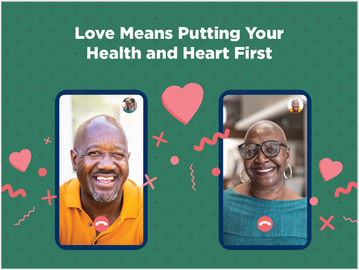 This Valentine’s Day, many will say “I love you” with flowers, candy, or a romantic dinner together. But there’s another way you can say “I love you” – by making your health and your heart a priority. Show your family how much you love them by taking steps now to protect your health and your heart so you can spend quality time with them for years to come. Take time this Valentine’s Day to ask your doctor if you have prediabetes, which puts you at risk for type 2 diabetes. One in three American adults has prediabetes, a condition where a person’s blood sugar levels are higher than normal, but not high enough yet for a type 2 diabetes diagnosis. Some populations are more at risk for developing type 2 diabetes than others. For example, 12.5% of Hispanics have diabetes compared to just 7.5% of non-Hispanic whites. Your doctor can tell you for sure whether you have prediabetes or not. Prediabetes and type 2 diabetes can also lead to problems with your heart. Your heart is pretty amazing – with each beat, it pumps oxygen-rich blood to every cell in your body. When something goes wrong with your heart, it’s a big deal for your health. February is American Heart Month, so now is the perfect time to take care of it. If you find out that you have prediabetes or have a high risk of developing type 2 diabetes, there is something you can do to take care of your health and your heart. The CDC’s National Diabetes Prevention Program offers a proven lifestyle change program that can help you learn the skills you need to eat better, become more physically active, and manage stress – all to reduce your risk of developing type 2 diabetes. In the program, you will work in a group with a trained lifestyle coach to learn the skills you need to make lasting changes. The CDC-recognized lifestyle change program offers a real chance to prevent or delay the onset of type 2 diabetes. The healthy habits that participants learn in the program have also been shown to reduce the incidence of heart disease and stroke. This February show your family love in a new way – by putting your health and your heart first. Ask your doctor about prediabetes and learn more about the CDC’s National Diabetes Prevention Program to reduce your risk of developing type 2 diabetes. Visit cdc.gov/diabetes/prevention today for more information. January 7, 2021 - The latest issue of NCFH News is now available!
Stay informed of our events, products and resources, as well as news from the migrant health center community. Sign up to have NCFH news delivered to your inbox every month. 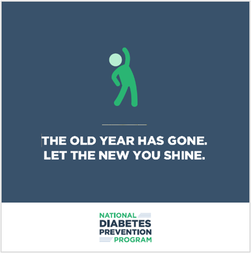 Have you thought about your resolutions for the new year? This year, put healthy living at the top of your list. You don’t have to make drastic changes. You can incorporate healthy habits into your daily routine to improve your health and reduce your chances for developing type 2 diabetes. Wondering where to begin? Here’s what you can do. First, learn your risk for type 2 diabetes. Could you have prediabetes? If so, you’d be 1 in 3 adults who has this serious health condition where blood sugar levels are higher than normal, but not yet high enough for a type 2 diabetes diagnosis. Prediabetes increases your risk of developing type 2 diabetes, as well as other serious health problems. The good news is that you can frequently reverse prediabetes with healthy lifestyle changes. The first step to a healthier you is to know whether you’re at risk. Take a one-minute risk test at cdc.gov/diabetes/risktest to find out your risk. Your doctor can also run a blood test to see if you have prediabetes. Then take action. If you find out that you have prediabetes or have a high risk of developing type 2 diabetes, start taking steps to improve your health. Make an action plan of specific ways that you can eat healthier and exercise more in the new year. Here are some ideas:
Write down your action plan to help you stay accountable. Make sure your plan is realistic, specific, flexible, and enjoyable! You don’t have to do it alone. Making a change isn’t easy, and you don’t have to do it alone. The CDC’s National Diabetes Prevention program offers a lifestyle change program that can help you learn the skills you need to get healthier and reduce your risk of developing type 2 diabetes. In the program, participants work in a group with a trained lifestyle coach to learn how to make long-term changes. It’s a new year. Get started on your healthier life by finding a CDC lifestyle change program near you here. For more information, visit cdc.gov/diabetes/prevention. This Holiday Season, Give the Gift of Good Health by Preventing or Delaying Type 2 Diabetes.12/1/2020 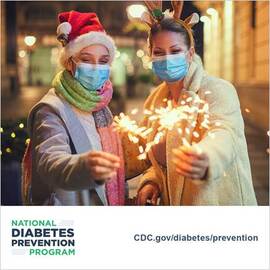 Looking for the perfect gift this holiday season? Why not give yourself and your loved ones the gift of good health! By making changes – like eating better and being more physically active – you can prevent or delay type 2 diabetes and have many more years to make memories with your family. Type 2 diabetes is a serious disease that can lead to other health conditions such as heart disease, vision loss, and kidney disease. One in three Americans has prediabetes, a condition where blood sugar levels are higher than normal but not high enough yet for a type 2 diabetes diagnosis. You can have prediabetes for years but have no clear symptoms, so it often goes undetected until serious health problems show up. The good news is that prediabetes can often be reversed by making lifestyle changes. As you plan for the holidays this year, think about how you and your family can fit some healthy habits into your celebrations. For example, you can:
This year, let healthy lifestyle changes bring comfort and joy to your holidays. But don’t stop there – better health is the gift that keeps on giving! The CDC’s National Diabetes Prevention Program offers classes that can help you learn more about how to get and stay healthier and reduce your risk of developing type 2 diabetes. In the program, participants work in a group with a trained lifestyle coach to learn how to make long-term changes. For more information, click here and give yourself and your family the gift of good health by preventing type 2 diabetes! Are you at risk for prediabetes? You and your family members could have prediabetes and be at risk for type 2 diabetes, heart disease, and stroke if youhave any of the following risk factors:
To find out if you are at risk, you can take a 1-minute prediabetes risk test at cdc.gov/diabetes/risktest. |
The National Center for Farmworker HealthImproving health care access for one of America's most vulnerable populations Archives
March 2024
Categories
All
|

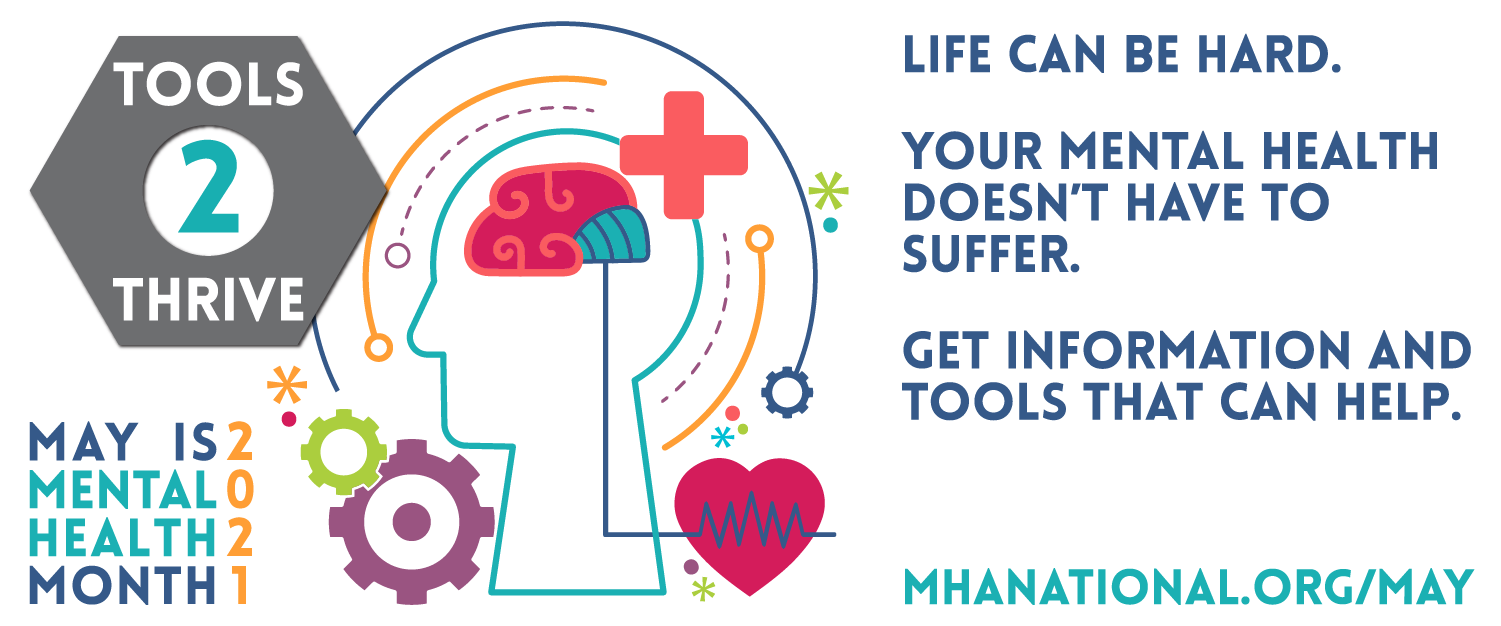

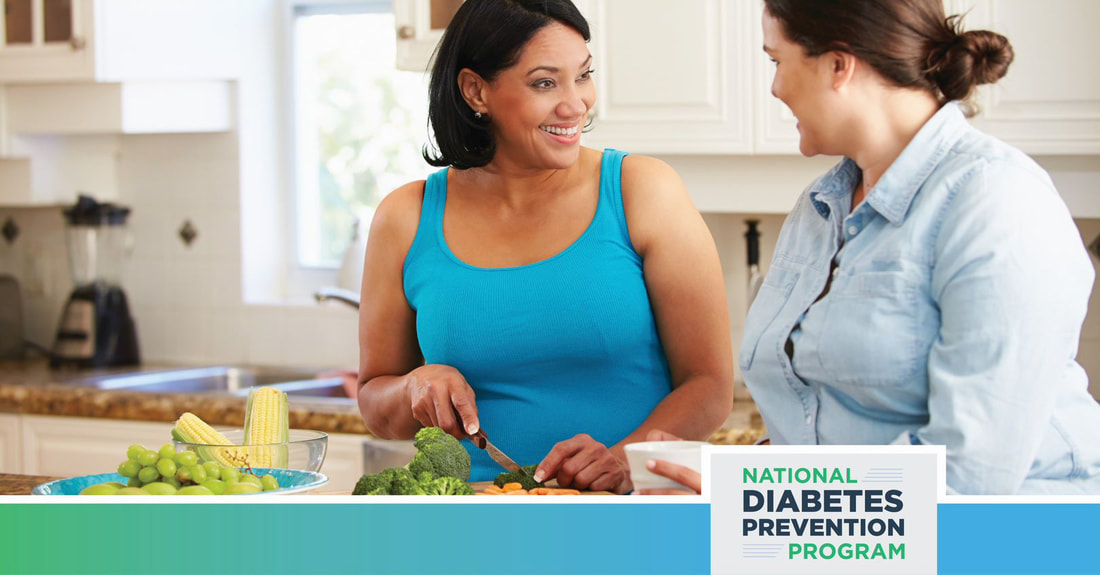


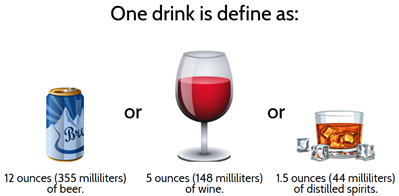
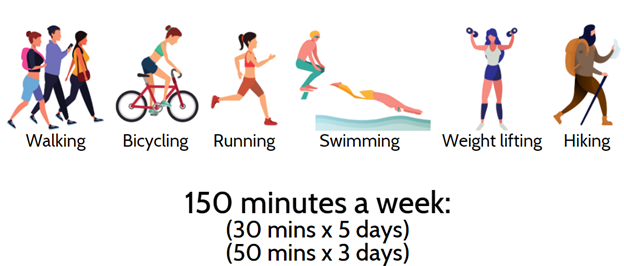

 RSS Feed
RSS Feed